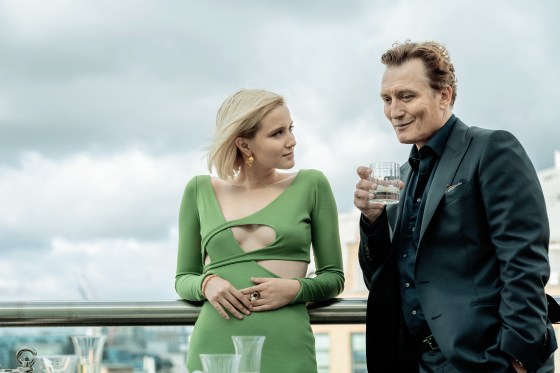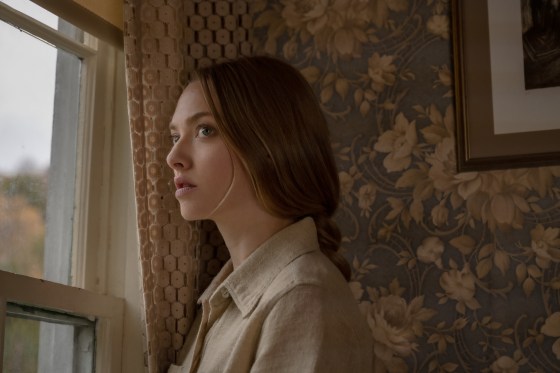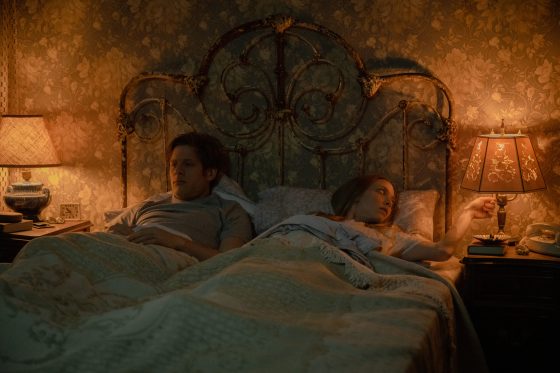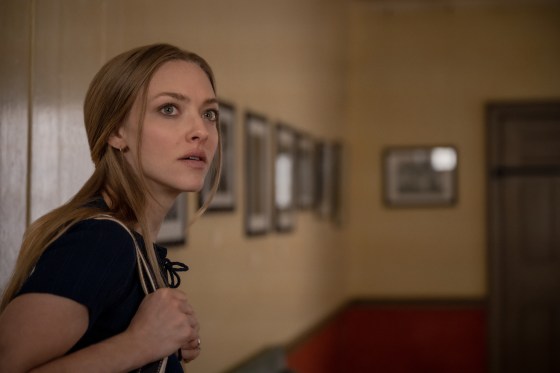It was around 13 years ago when LeSean Thomas first learned of Yasuke. At that time, Thomas came across the 1968 Japanese children’s book Kuro-suke by Kurusu Yoshio and saw illustrations of the real-life African warrior who arrived in 16th century Japan and served under Oda Nobunaga—a greatly influential feudal lord who is widely regarded as the first unifier of the country. “It kind of felt like a secret treasure,” Thomas said. He found it particularly fascinating that the story of Yasuke, largely considered to be the first foreign-born samurai, was told in a Japanese work. “I just thought it was really cool that there was someone in Japan who was validating this because as a concept in the West at that time, it was kind of viewed as a self-insert culturally to put a Black man with someone who was one of the unifiers of Japan,” Thomas told TIME in a recent Zoom interview. “Even at the time I didn’t believe it.”
That disbelief has since faded, and more than a decade after his revelation, the longtime animation producer and comic artist, whose previous credits include Cannon Busters, The Legend of Korra and The Boondocks, is now the creator and director of the Netflix anime series Yasuke. The series, which premiered on April 29, reimagines the story of the Black warrior with a fantastical twist. In the show, the eponymous character (voiced by LaKeith Stanfield) is driven by a sense of duty to keep the weak safe. When a man draws his sword on a child in the first episode, Yasuke calmly steps in to fight him—and swiftly defeats him. And after a traumatic event leads the character to leave the battlefield behind for a quiet life as a boatsman, he feels compelled to pick up his sword again when asked to help a sickly young girl. With a steady and assured voice, Stanfield’s performance imbues the character with strength and authority.
To create the series, Thomas—who was born in New York City and is now based in Tokyo—teamed up with Japanese powerhouse animation studio MAPPA (Jujutsu Kaisen, Attack on Titan: The Final Season). The music producer, rapper and filmmaker Flying Lotus composed music for the show and also served as executive producer.
“There is a serendipitous nature about this project, how an African-American man goes to Japan to live and work amongst the very best in Japanese anime to create an anime about an African who goes to Japan to live amongst the Japanese elite and become a warrior,” Thomas said in a press release last month. Flying Lotus, who joins our Zoom interview from Los Angeles, where he is based, also saw a parallel between Yasuke’s story and his own experience working on the series. “My involvement with the music part too is, again, another kind of outsider trying to work in the system—the Japanese anime system—which is totally different to how we do things here,” Flying Lotus said.
In the show, though Yasuke is almost immediately welcomed by Nobunaga, some close to the feudal lord repeatedly disparage his status as a foreigner and a Black man. Flying Lotus said he was unsure of the response he would receive when the project was first proposed. “I had to go to Japan and ask the Japanese system if it was cool for us to do this show and we had to pretty much be welcomed into the squad,” he said. “And who knows if there was that moment of hesitation.” He and Thomas described Flying Lotus’ trip in the spring of 2018—where the pair met with MAPPA CEO Manabu Otsuka over dinner at a traditional Japanese restaurant to discuss the show. “We needed to get his blessing,” Thomas said. The meal ended positively. Otsuka was on board and the group took a photo—“the start of something cool,” as Thomas called it.
Ahead of Yasuke’s release, Thomas and Flying Lotus spoke to TIME about creating a new animated hero, the portrayal of Black characters in anime and how they hope the Netflix series will inspire the next generation of Black creators.
Read more: The True Story of Yasuke, the Legendary Black Samurai Behind Netflix’s New Anime Series
Creating a new Black action hero in animation
In the anime series, Yasuke wields a sword against humans, robots and magical beasts in fight sequences with stunning choreography. For Thomas, creating a new action hero who is Black was front of mind in making the show. “For this generation, we haven’t really seen a lot of Black animated TV heroes that are created by us,” he said, referring to Black creators. The director referenced Aaron McGruder’s The Boondocks—the 2005 sitcom that Thomas worked on as a co-director of several episodes and as a character supervisor—and Dwayne McDuffie and Denys Cowan’s 2000 series Static Shock, as the few examples he had seen. (While The Boondocks, which follows a Black family, is not of the superhero genre, Thomas said it’s fair to call many of its characters heroes.) He added that when it comes to Japanese animated series with a lead Black character, there have been few examples besides Afro Samurai, the 2007 television show adapted from Takashi Okazaki’s 1998 manga series.
“It’s the kind of thing where hopefully the right kids see it,” Flying Lotus said of Yasuke. “I just hope that some seeds are being planted, and this is just the beginning of the onslaught of Black animation.”
Thomas said that he had expected a wave of Black creators in the animation space to follow after The Boondocks began airing more than 15 years ago, but it “didn’t really happen.” He thinks the current moment will be different. “I feel like with streaming and technology, it’s better for us to try it now—you see a lot more Black creatives in the industry,” he explained. Thomas hopes that Black kids will watch Yasuke and be encouraged to try something similar in the future. “Even if they don’t like it, it will motivate them to want to do it—to do a better job than what we did,” Thomas said.
The portrayal of Black characters in anime
This hope for more Black creators to enter the anime space comes at a time when the global popularity of Japanese animated series and films continues to surge. Just last weekend, Demon Slayer: Kimetsu no Yaiba the Movie: Mugen Train, the film adapted from Koyoharu Gotouge’s manga, made the biggest foreign-language debut in the U.S. when its North American opening weekend raked in more than $21 million—even with capacity restrictions at theaters due to the pandemic. As international audiences for the medium grow, so have discussions about the ways in which characters of different racial and ethnic backgrounds are depicted in anime. In particular, the portrayal of Black characters that trade in racial stereotypes—in series old and new—has sparked conversations.
This subject was front of mind for Flying Lotus and Thomas in the creative process of Yasuke. Flying Lotus brings up comments from observing past works of anime. “Man, how they gonna do us like that… go draw the hands right, why the lips gotta look like that,” he recalls.
On the note of coloring Black characters’ palms in a lighter tone than the rest of the hand, Thomas said the design is often omitted for financial reasons. “Black creators in the United States have never, if rarely, colored the palms of their Black characters’ skins accurately,” he explained. “We don’t normally do that because TV productions are very, very low budget, generally, compared to feature films.” But in creating Yasuke, Thomas wanted to do something different. “As someone who’s self-aware of that as a producer and as a Black creator working with Black characters predominantly, that was something we wanted to add,” he said. “[Takeshi] Koike-sama was totally on board with it,” Thomas said of the series animator.

Thomas recalled his experience working on the anime series Cannon Busters, which was released on Netflix in 2019 and based on a 2005 comic book series he had co-written. The animated series was produced by the Japanese studios Satelight and Yumeta Company. “When I did Cannon Busters, which was my first show with Netflix featuring an all predominantly brown cast, there were so many notes I had to give on the show,” he said. “They were just on default mode drawing these Black characters with the sausage lips.” He said this type of art style has been standardized in Japanese animation since a few decades ago, and it’s one that has been influenced by minstrel images from white Western media. Satelight and Yumeta Company did not immediately respond to TIME’s request for comment.
“We didn’t have any problems with MAPPA but I had to be super careful about my intentions on how to depict [Yasuke] based off of my experiences working on Cannon Busters,” Thomas added. “I don’t think it’s a malicious thing, but I definitely think that there needs to be someone who’s there to be like, ‘Hey, this is not cool, perhaps try it this way.’”
Holding manga creators accountable
Thomas also explained that he thinks some of the criticism toward anime directors regarding racially insensitive depictions of Black characters has been misdirected. He noted that many of the series that have received complaints are adapted from long-running manga. “It’s not the Japanese directors who are saying, ‘This is what Black people look like.’ It’s the manga creators because [the Japanese directors] are adapting exactly from the manga,” Thomas said. “It really puts the onus on the mangakas, the manga creators who are depicting us in those negative ways in Dragon Ball Z, Sister Krone in The Promised Neverland, One Punch Man.”
The characters of Mr. Popo in Dragon Ball Z, Sister Krone in The Promised Neverland and Superalloy Darkshine in One Punch Man have all been criticized for embodying features reminiscent of minstrel imagery. While they are not all Black—Mr. Popo, for instance, is a non-human deity—their depictions largely appear to be rooted in racist tropes. The three works are also examples of anime shows that were adapted from popular manga series—Dragon Ball was first published in 1984, The Promised Neverland in 2016, One Punch Man in 2009. “There’s probably other manga that depicts Black people in a racist, caricatured way,” Thomas said. “But those mangas aren’t popular enough to be adapted to TV shows.”
And while anime directors and producers have the ability to make changes to the original content, they usually do not. Thomas said that when it comes to Japanese anime creators adapting manga, there is so much respect for the source material that they tend to replicate the art. “There isn’t going to be a social justice consultant during the anime adaptation saying, hey, Black people don’t like the way they look here, let’s change Akira Toriyama’s Mr. Popo,” Thomas said. Flying Lotus chimed in. “Honestly, they should though, cause that sh-t is offensive as f-ck.” he said. “That’s a quick phone call that don’t take much to verify, like, ask a Black guy.”
In the case of Mr. Popo, whose portrayal has been widely criticized for evoking blackface, one version of a more recent broadcast by 4Kids has turned the character blue in an attempt to address the racial insensitivity. This is similar to the recoloring of Jynx from Pokémon, a character who the game developer Game Freak changed from black to purple following criticism that the design resembled blackface. (Jynx first appeared in the 1996 Pokémon video game.)
“The manga creators need to be a bit more educated, because they don’t have a problem getting white Europeans right, and they’re not Japanese either,” Thomas continued. He referenced Attack on Titan and Fullmetal Alchemist, both of which are anime series adapted from manga that follow protagonists largely believed to be of European descent. “They’re very careful in the depictions of European history,” Thomas said. “They don’t have any real experience with the African diaspora.”
Thomas said he has seen fewer examples of Black people depicted negatively in Japanese animated works that are not adapted from manga. He cited Shinichirō Watanabe, most famously known for his anime series Cowboy Bebop, as someone who has been thoughtful in portraying Black characters in his original creations. “He’s intentional with his depictions of us in his content whenever he does depict us,” Thomas said. Though Japan is a largely homogenous society, there is a greater call for anime, one of its most popular exports, to celebrate racial diversity and depict racially diverse characters in more authentic ways.
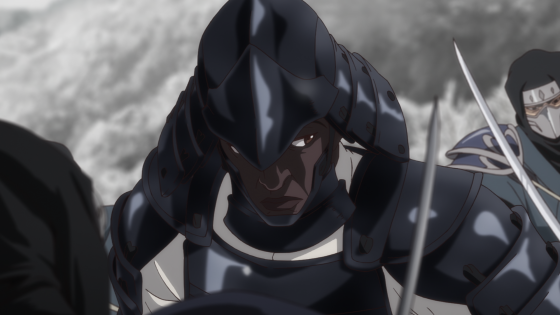
The legacy of Yasuke
For both Thomas and Flying Lotus, the significance of their creative direction—and Stanfield’s—in Yasuke can’t be understated. “Who knows about where LeSean, me and LaKeith will go after this,” Flying Lotus said. “I just hope that this project shows the world that there are so many Black anime fans.”
Thomas said that as a 16-year-old Black kid, he would have been deeply impacted by a group of Black men, each respected in his field, coming together to create a Japanese anime about a Black hero. “As a Black man seeing a dude from New York City doing this sh-t I would have lost my mind,” he said, referencing his South Bronx roots. Thomas said a project like Yasuke would have propelled him to do something similar. “I didn’t have that. So, for me, at the age that I’m at now, I’m just trying to be who I needed at 16 as a Black kid.”








